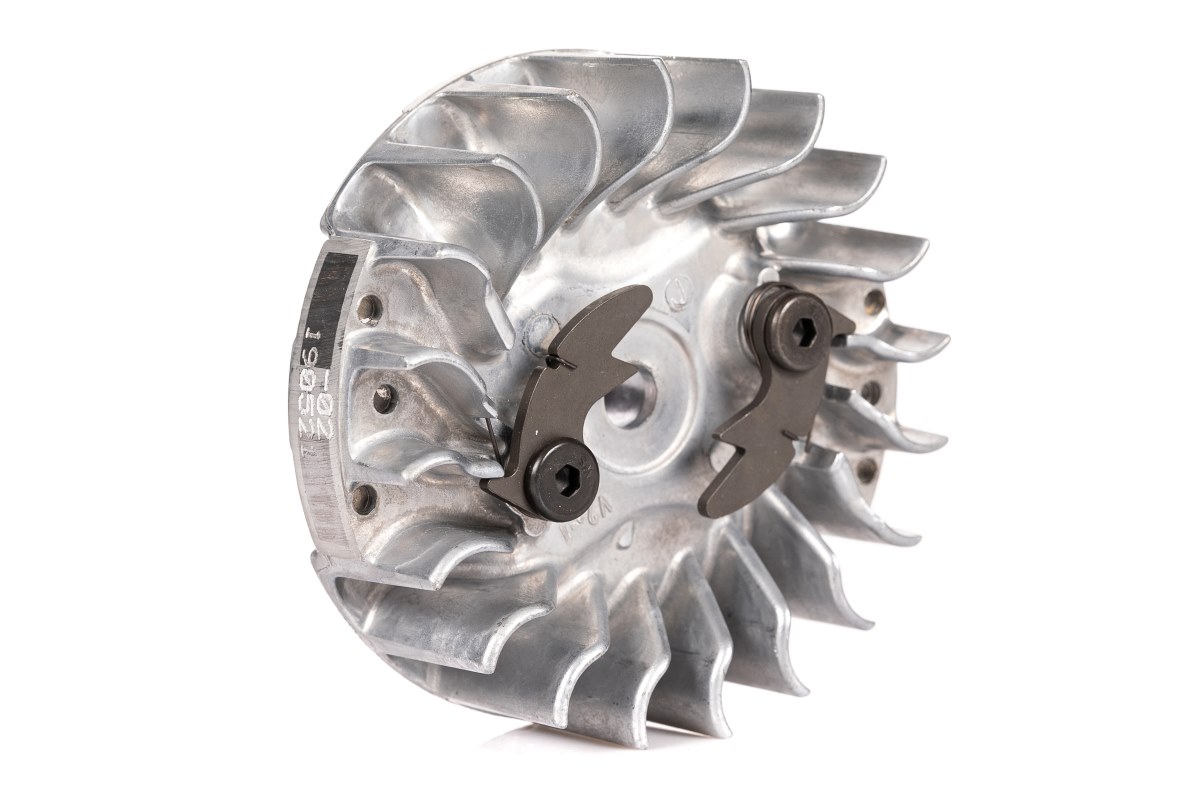What is a Flywheel in Car Engines and What are Its Uses?

A flywheel is an essential component of an automobile engine. It is a mechanical device that is particularly designed for storing rotational energy and unlocking its potential to drive the engine operation efficiently.
Let’s delve into what it exactly is and understand its construction, working principle, and other details to better understand its role in modern vehicles.
What is a Flywheel in a Car Engine?
A flywheel is a heavy disc or rotor-shaped component that is found on one end of the crankshaft. Its main function is to ensure the engine operates smoothly by maintaining a consistent and steady rotational motion in the transmission.
What is the Construction of a Flywheel in an Engine?
Traditionally, flywheels in engines used to be made up of cast iron. However, in modern times, it is generally made up of steel owing to its durable nature. Flywheels with high energy density comprise carbon fibre composites. These flywheels use magnetic bearings with wheels that can spin really fast, up to a speed of 60,000 RPM or revolutions per minute.
What are the Uses of a Flywheel in an Engine?
We have listed down some of the major uses of flywheels in engines.
- A flywheel ensures smooth vehicle operation by stabilising rotational motion.
- The flywheel stores energy during the power stroke and releases it later during the other stroke, thus maintaining consistent vehicle performance.
- Its energy storage capacity aids in charging the vehicle battery.
- Last but not least, the flywheel’s stored energy plays a crucial role in starting the engine.
How Does a Flywheel in an Engine Work?
The working principle of a flywheel is quite easy to comprehend. It acts like a rotational energy storage device for the vehicle. The energy stored is determined by its angular velocity and moment of inertia.
- The electric motor provides initial power to the flywheel.
- This leads to the motion of the piston, which in turn kickstarts fuel combustion inside the combustion chamber.
- Next, during the power stroke, the flywheel stores power from the engine and uses it for the remaining three strokes (Compression, exhaust and intake strokes).
- The entire process helps in stabilising the rotational motion of the transmission.
What are the Common Symptoms of a Bad Flywheel in an Engine?
Here is the list of the common problems of a flywheel.
- Clutch Slipping: This usually happens when power is not transferred to the wheel. It results in power loss causing the gear to slip.
- Clutch Dragging: In this particular case, clutches do not release completely, causing various gear grinding levels and difficulty changing gears.
- Burning Smell: A burning smell will generally arise due to a faulty flywheel or inexperienced operators.
- Clutch Pedal Vibration: When the flywheel’s spring mount is damaged, you may observe that the clutch pedal vibrates.
What are the Advantages of Flywheels in Engines?
Check out the main benefits of car flywheels below:
- The flywheel in the engine is capable of storing a high amount of energy.
- They provide reliable and simple solutions for smooth vehicle operation.
- With the flywheel, you can be assured of a cost-effective engine storage solution.
- Flywheel requires minimal maintenance, which also results greatly in cost savings.
What are the Disadvantages of Flywheels in Engines?
Some of the notable disadvantages of the flywheel are listed below:
- Fatigue-related failures are possible over extended use.
- Under extreme temperature conditions, bearings may sometimes be suspected to wear or even fail.
Thus, the flywheel plays a crucial role in the smooth operation of engines. The ability to store and release energy when required efficiently contributes greatly to the overall vehicle performance.
















